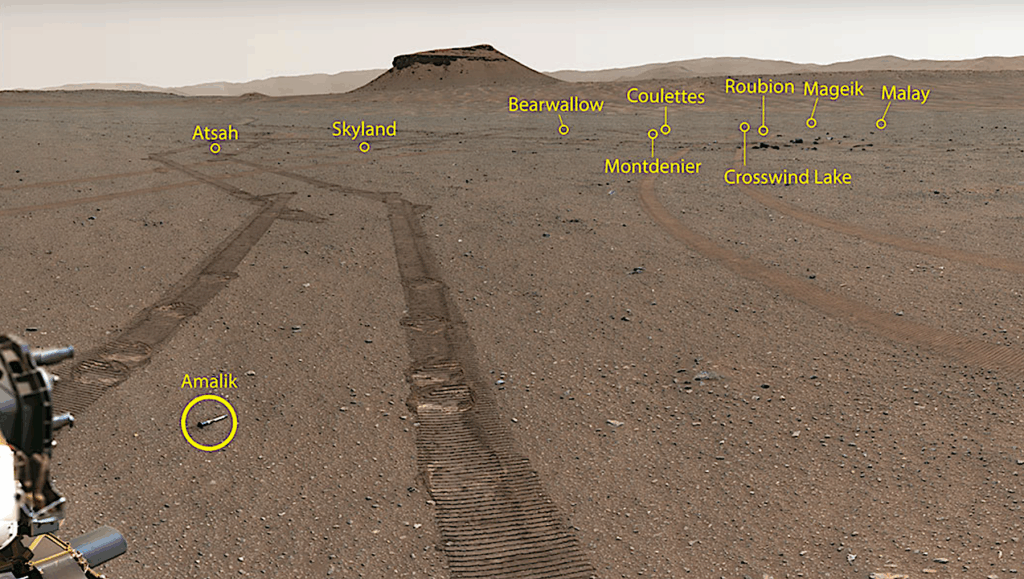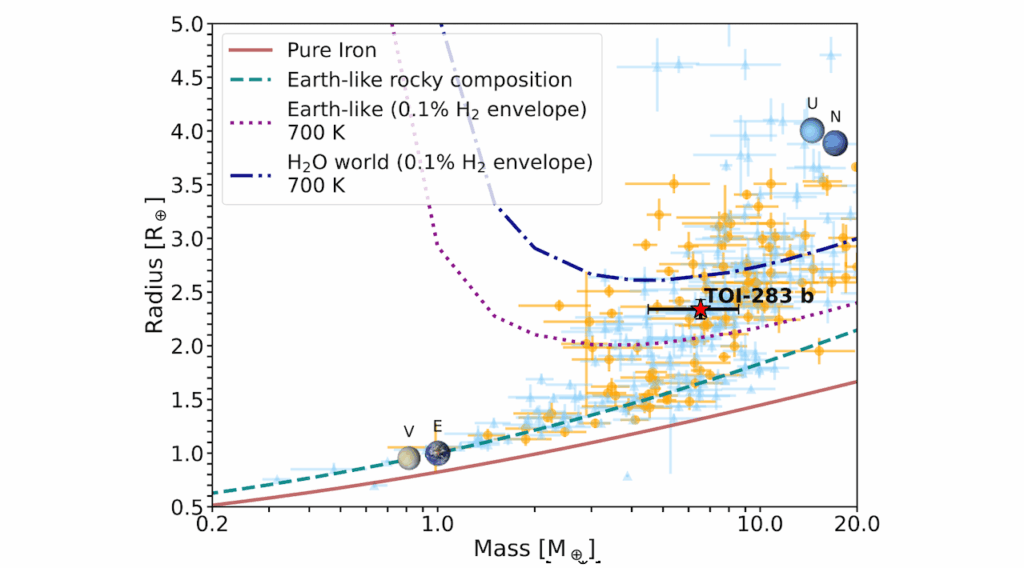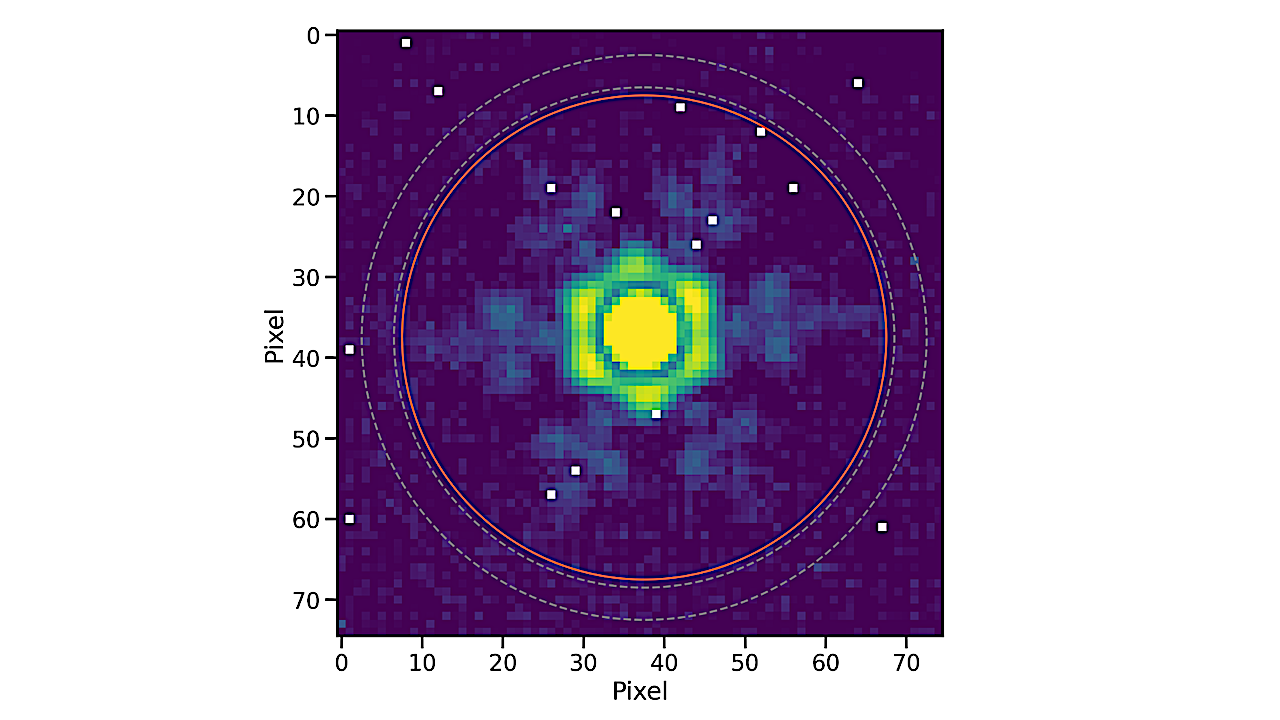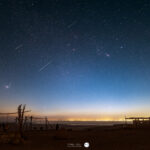Now Reading: Two Warm Earth-sized Exoplanets And An Earth-sized Candidate In The M5V-M6V Binary System TOI-2267
-
01
Two Warm Earth-sized Exoplanets And An Earth-sized Candidate In The M5V-M6V Binary System TOI-2267
Two Warm Earth-sized Exoplanets And An Earth-sized Candidate In The M5V-M6V Binary System TOI-2267
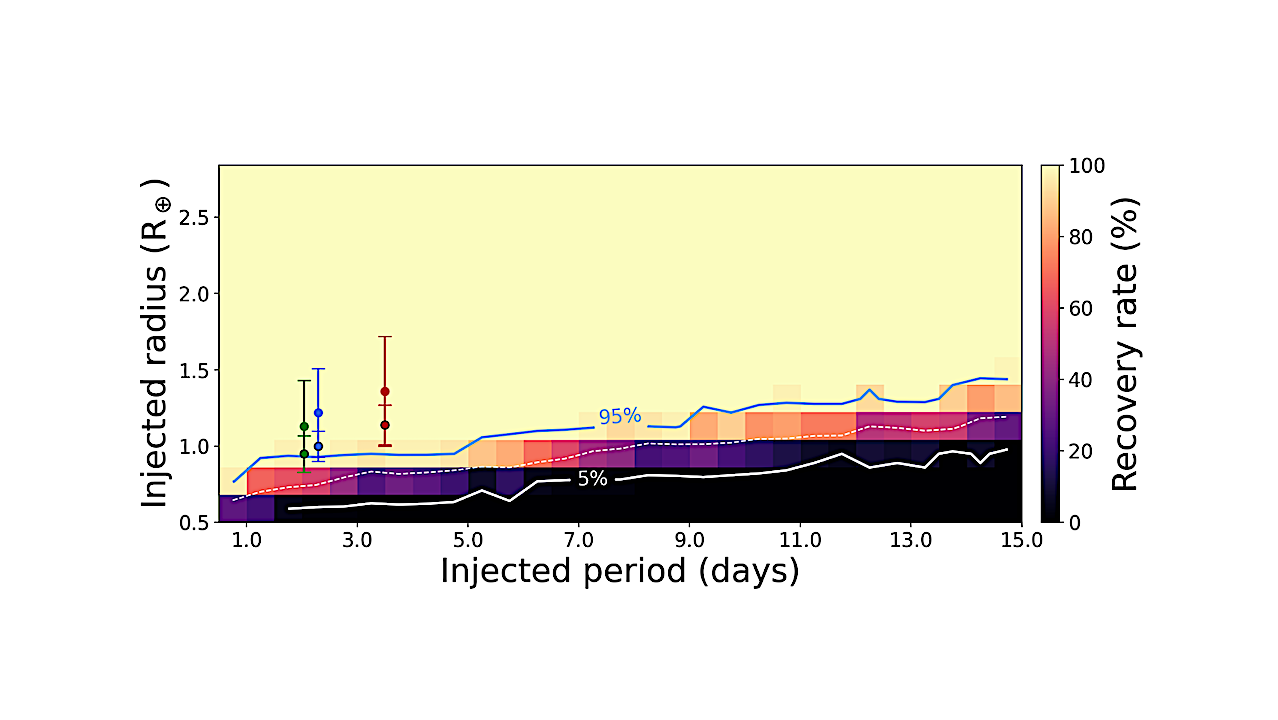
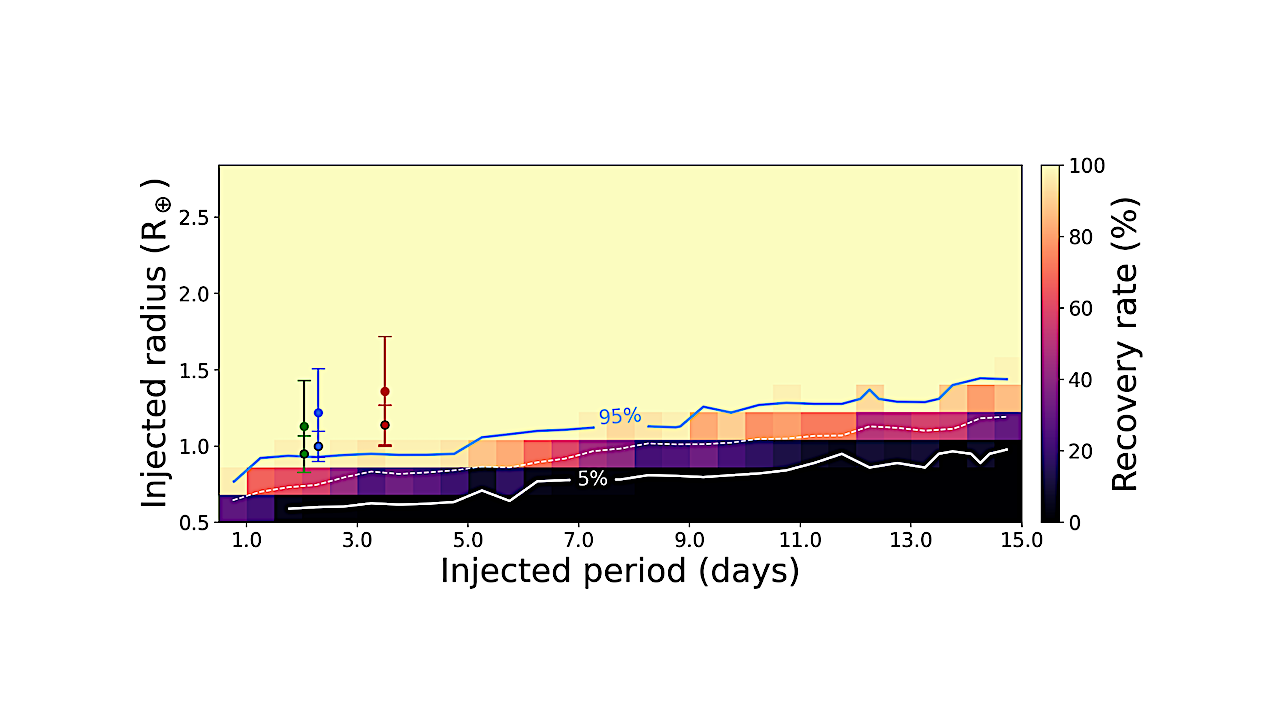
MATRIX injection-and-recovery experiment conducted to establish the detection limits using the ten TESS sectors described in Sect. 3.1. We explored a total of 18000 different scenarios, where each pixel evaluated 40 of them. Color indicates recovery rate: bright yellow for high recovery, dark purple/black for low recovery. The solid blue line indicates the 95% recovery contour, the dashed white line marks the 50%, and the solid white line corresponds to the 5%. Blue, red, and green points show planets b and c, and candidate .02, respectively. Blackedged circles denote planets orbiting the primary star; edge-free circles indicate the secondary star. — astro-ph.EP
We report two warm Earth-sized exoplanets orbiting the close binary TOI-2267 (M5+M6, separation ~8 au).
Data from TESS and ground-based facilities confirm the planets, but we cannot determine which star they orbit.
The planets have radii of 1.00+/-0.11 R_Earth (TOI-2267 b, P=2.28 d) and 1.14+/-0.13 R_Earth (TOI-2267 c, P=3.49 d) if around TOI-2267A, or 1.22+/-0.29 R_Earth and 1.36+/-0.33 R_Earth if around TOI-2267B. TESS also shows a candidate signal (TOI-2267.02, P=2.03 d, 0.95+/-0.12 or 1.13+/-0.30 R_Earth).
Dynamical analysis shows all three cannot orbit one star; the most stable configuration has planets b and c (near a 3:2 resonance) orbiting one star and the candidate the other.
This scenario would make TOI-2267 the most compact binary system known to host planets, with both components harbouring transiting worlds, offering a unique benchmark for studying planet formation and evolution in compact binary.
S. Zúñiga-Fernández, F. J. Pozuelos, M. Dévora-Pajares, N. Cuello, M. Greklek-McKeon, K. G. Stassun, V. Van Grootel, B. Rojas-Ayala, J. Korth, M. N. Günther, A. J. Burgasser, C. Hsu, B. V. Rackham, K. Barkaoui, M. Timmermans, C. Cadieux, R. Alonso, I. A. Strakhov, S. B. Howell, C. Littlefield, E. Furlan, P. J. Amado, J. M. Jenkins, J. D. Twicken, M. Sucerquia, Y. T. Davis, N. Schanche, K. A. Collins, A. Burdanov, F. Davoudi, B.-O. Demory, L. Delrez, G. Dransfield, E. Ducrot, L. J. Garcia, M. Gillon, Y. Gómez Maqueo Chew, C. Janó Muñoz, E. Jehin, C. A. Murray, P. Niraula, P. P. Pedersen, D. Queloz, R. Rebolo-López, M. G. Scott, D. Sebastian, M. J. Hooton, S. J. Thompson, A. H. M. J. Triaud, J. de Wit, M. Ghachoui, Z. Benkhaldoun, R. Doyon, D. Lafrenière, V. Casanova, A. Sota, I. Plauchu-Frayn, A. Khandelwal, F. Zong Lang, U. Schroffenegger, S. Wampfler, M. Lendl, R. P. Schwarz, F. Murgas, E. Palle, H. Parviainen
Comments: 18 pages article, 12 pages Appendix. Accepted for publication in A&A. Corresponding authors: S. Zúñiga-Fernández and F. J. Pozuelos
Subjects: Earth and Planetary Astrophysics (astro-ph.EP); Solar and Stellar Astrophysics (astro-ph.SR)
Cite as: arXiv:2508.14176 [astro-ph.EP] (or arXiv:2508.14176v1 [astro-ph.EP] for this version)
https://doi.org/10.48550/arXiv.2508.14176
Focus to learn more
Submission history
From: Sebastián Zúñiga-Fernández
[v1] Tue, 19 Aug 2025 18:01:10 UTC (17,106 KB)
https://arxiv.org/abs/2508.14176
Astrobiology,
Stay Informed With the Latest & Most Important News
Previous Post
Next Post
-
 012024 in Review: Highlights from NASA in Silicon Valley
012024 in Review: Highlights from NASA in Silicon Valley -
 02Panasonic Leica Summilux DG 15mm f/1.7 ASPH review
02Panasonic Leica Summilux DG 15mm f/1.7 ASPH review -
 03How New NASA, India Earth Satellite NISAR Will See Earth
03How New NASA, India Earth Satellite NISAR Will See Earth -
 04And Thus Begins A New Year For Life On Earth
04And Thus Begins A New Year For Life On Earth -
 05Astronomy Activation Ambassadors: A New Era
05Astronomy Activation Ambassadors: A New Era -
06SpaceX launch surge helps set new global launch record in 2024
-
 07Space Force plans new ‘Futures Command’ amid pressure to speed up modernization
07Space Force plans new ‘Futures Command’ amid pressure to speed up modernization












